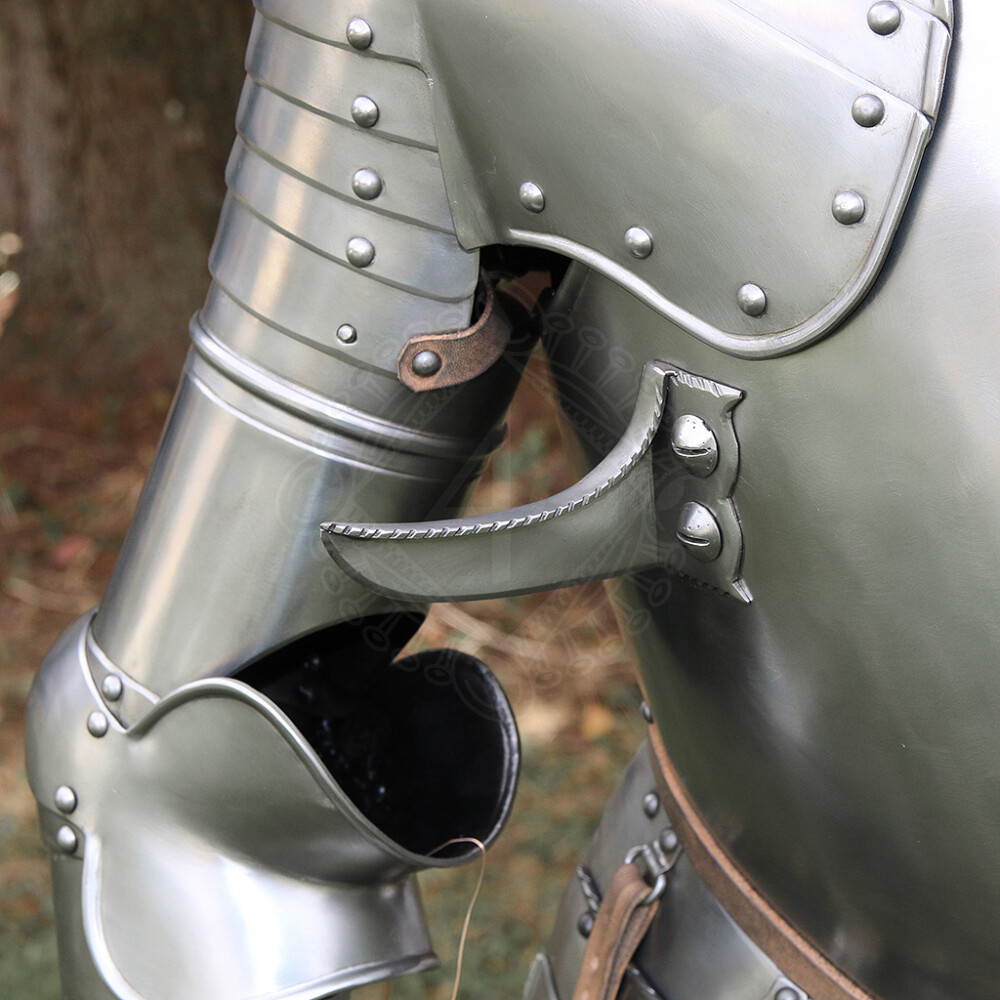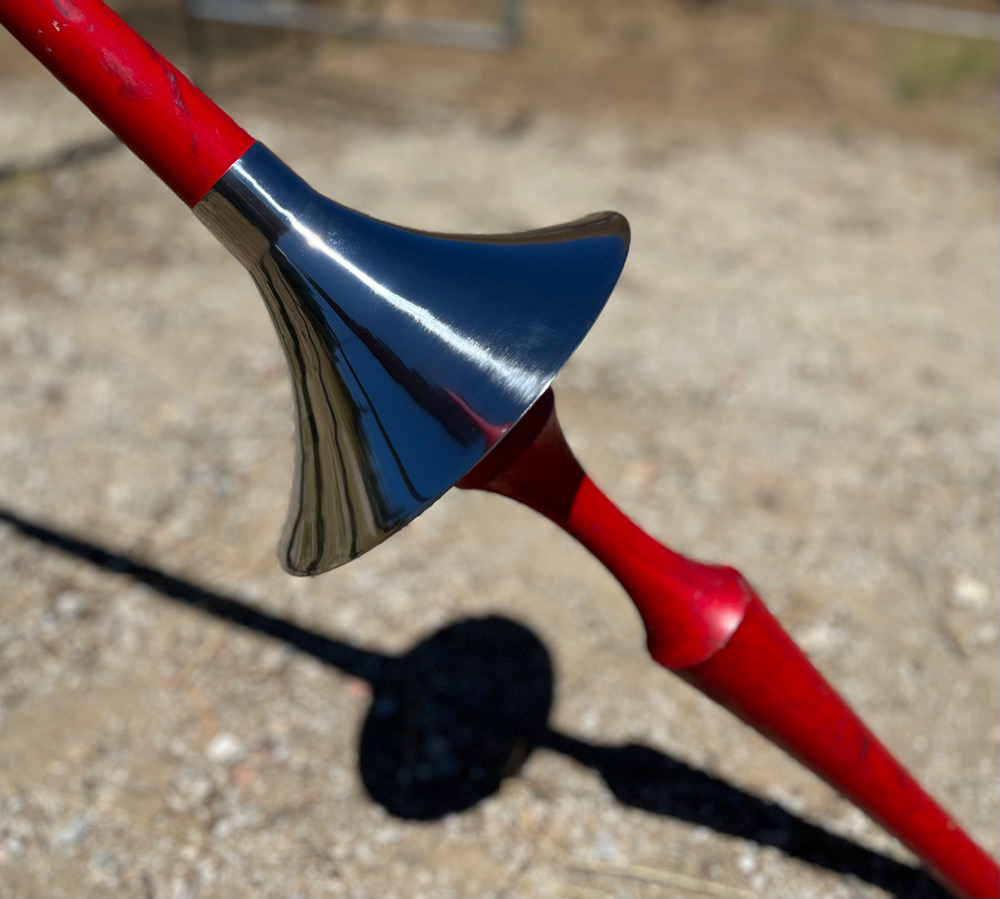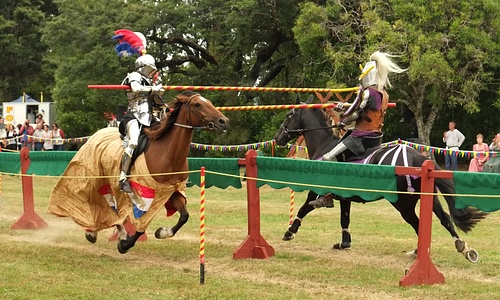~ The Lance
Medieval Weaponry ~
Among the many weapons that shaped the medieval battlefield, few were as iconic as the lance. Long, powerful, and designed for use on horseback, the lance was the symbol of the medieval knight. It brought not just military power, but also chivalric prestige. Whether used in real combat or in the colorful tournaments of the nobility, the lance was a central part of mounted warfare for centuries.
What Is a Lance?
The lance is a long, thrusting pole weapon, typically used by cavalry in a charge. It is not designed to be thrown, like a javelin, nor to be used in prolonged melee combat like a sword or axe. Instead, it focuses the momentum of a galloping horse into a single explosive impact through its pointed tip.
Typical Features
- Length: Between 9 to 14 feet (approximately 2.7 to 4.2 meters)
- Material: Usually hardwood (ash, oak), sometimes hollowed to reduce weight
- Tip: Steel or iron spearhead, often reinforced for piercing armor
- Grip: Some lances had hand guards, vamplates, or rests to help the knight control the weapon during a charge
Origins and Early Use
The lance evolved from earlier cavalry spears used by ancient cultures such as the Persians, Greeks, and Romans. But it truly found its place in Europe during the early Middle Ages, when the feudal knight became the dominant battlefield figure. By the 11th and 12th centuries, heavily armored knights on horseback with couched lances were a defining military force across Europe.
The Norman knights at the Battle of Hastings in 1066 famously used lances in their cavalry charges. From that time forward, the lance became a signature weapon of the knightly class.
How Was the Lance Used in Battle?
The lance was primarily used in a couched position — that is, the base of the lance was tucked under the arm and braced against the body. This allowed the full momentum of the horse and rider to be transmitted through the point of the weapon into the target.
Common Tactics
- Shock cavalry charges: The primary use of the lance was in tightly packed, high-speed charges against enemy infantry or cavalry formations. A well-timed charge could break enemy lines.
- Initial strike weapon: After the charge, the lance was often dropped or discarded, and knights would switch to swords or maces for close combat.
- Tournament use: In non-lethal jousts and tournaments, blunted or coronel-tipped lances were used to score points by unseating the opponent.
Lance Rest and Vamplate
To manage the force of a lance strike, knights developed special attachments:
- Lance rest: A metal hook or shelf attached to the breastplate to stabilize the lance during impact.
- Vamplate: A circular guard on the lance shaft near the grip to protect the hand and prevent it from sliding forward.


Advantages of the Lance
- Devastating impact: A lance charge could break through infantry ranks and unhorse enemy riders.
- Reach: The long shaft allowed knights to strike before the enemy could respond with melee weapons.
- Symbol of nobility: The lance was tied to the ideals of knighthood and chivalry.
- Psychological effect: A line of charging knights with lances lowered was a terrifying sight on the battlefield.
Limitations of the Lance
Despite its strengths, the lance had significant drawbacks:
- Single-use in battle: After one charge, lances often broke or were discarded.
- Ineffective in close quarters: Too long and heavy to use effectively in melee fighting.
- Requires a trained horse: The shock of impact could unbalance or panic an untrained steed.
- Limited terrain use: Lance charges required open space and were difficult in forests, hills, or narrow streets.
Lance in Tournaments

Beyond the battlefield, the lance was a major part of jousting tournaments. Knights would face off in controlled environments, using specially made lances with blunted tips. These events were not just training — they were also political and social displays of status and skill.
Legacy and Decline
As gunpowder weapons became more dominant in the 16th century, heavy cavalry charges with lances became less effective. Firearms could pierce armor from a distance, and tight pike formations could stop a charge in its tracks. However, lancers continued to exist in some form well into the 18th and 19th centuries — most notably in the form of light cavalry lancers armed with shorter versions of the weapon.
Even today, the image of a knight with a lance remains one of the most iconic symbols of the medieval world — representing bravery, honor, and elite martial skill.
Conclusion
The lance was not just a weapon — it was an expression of medieval warfare's emphasis on speed, power, and shock. Though limited in versatility, its psychological and physical impact on the battlefield was unmatched in its time. For centuries, it defined the role of the mounted knight and left a lasting legacy in both history and legend.